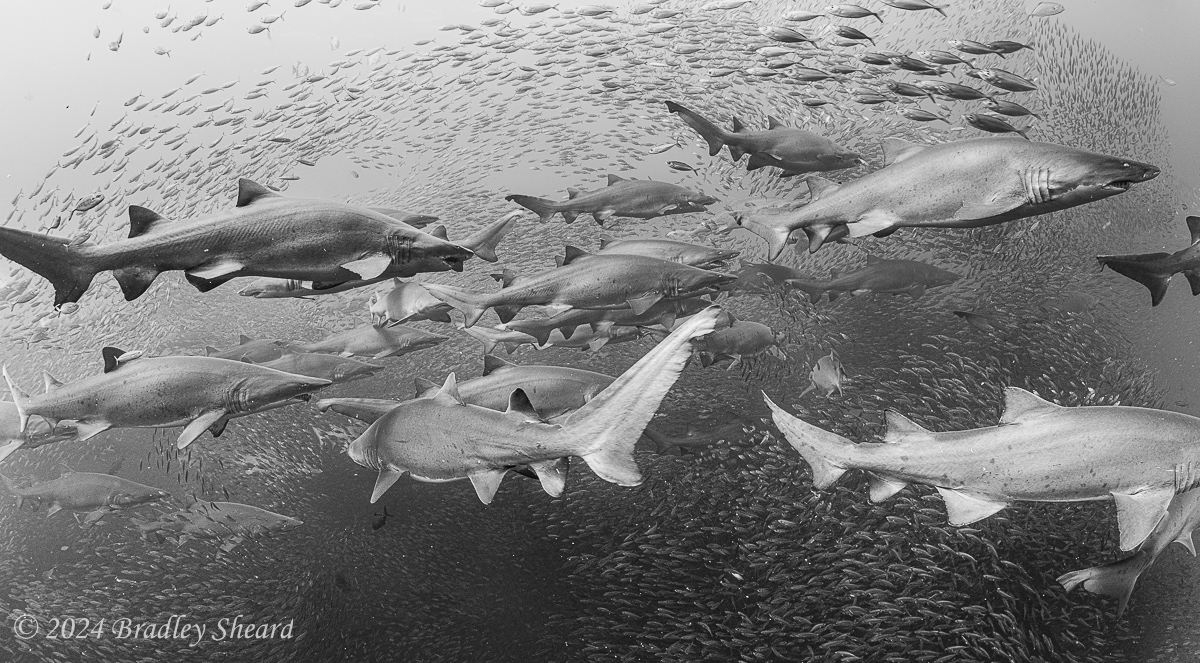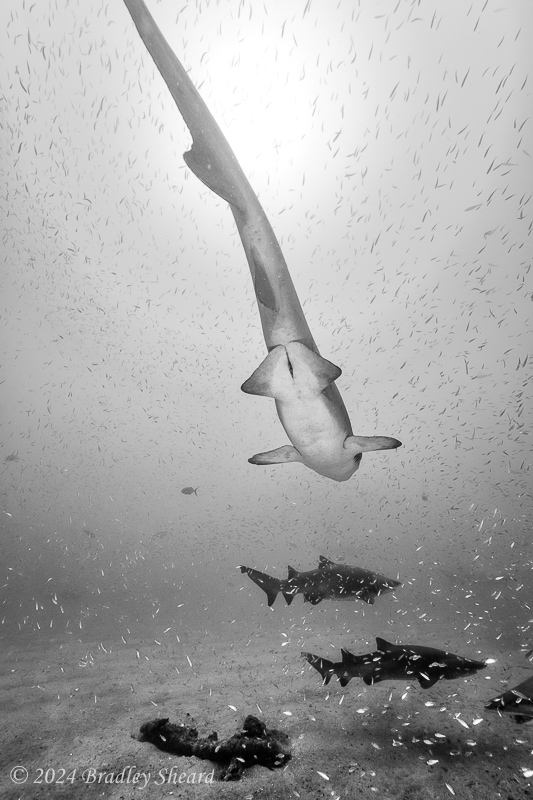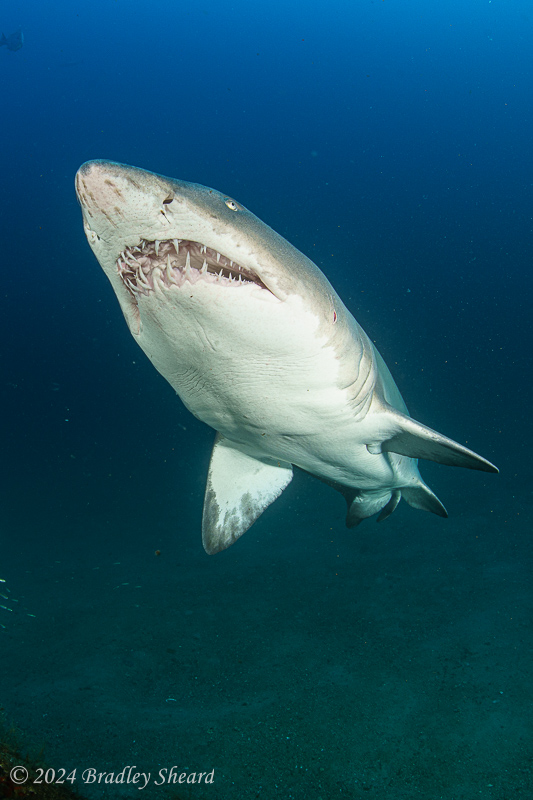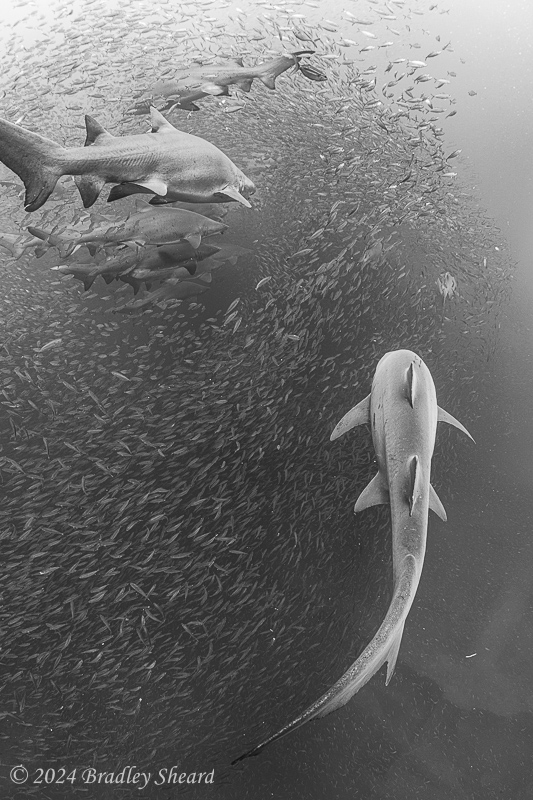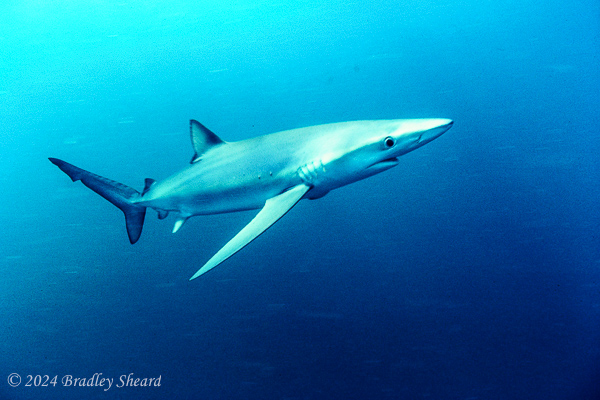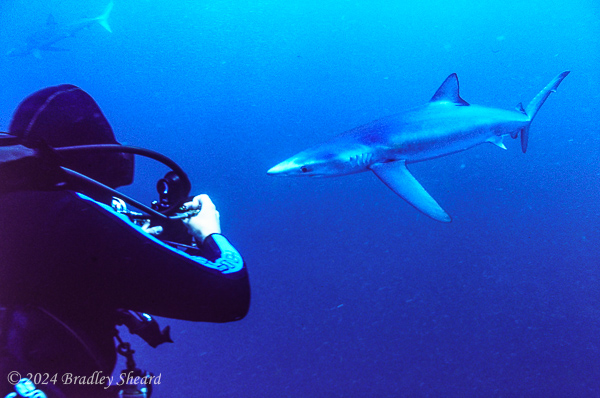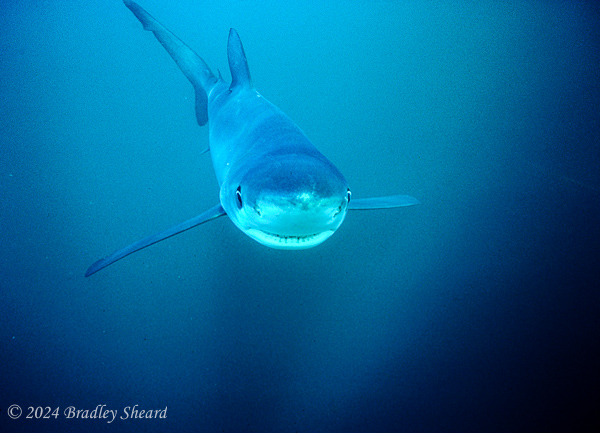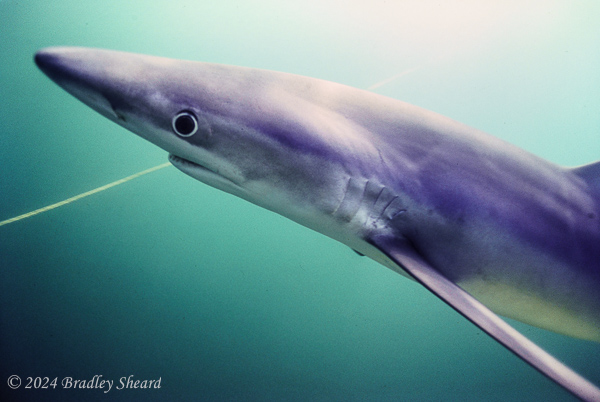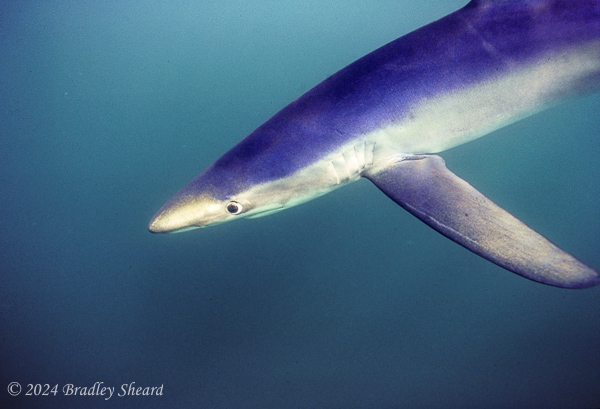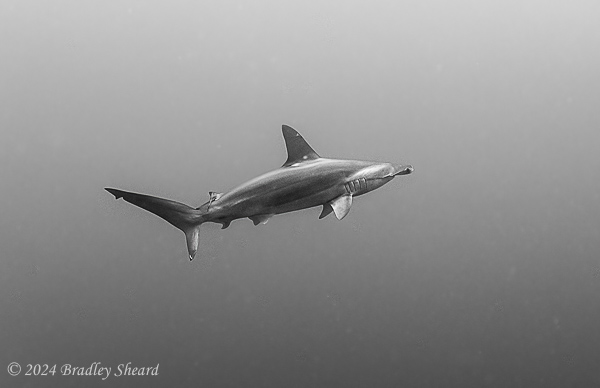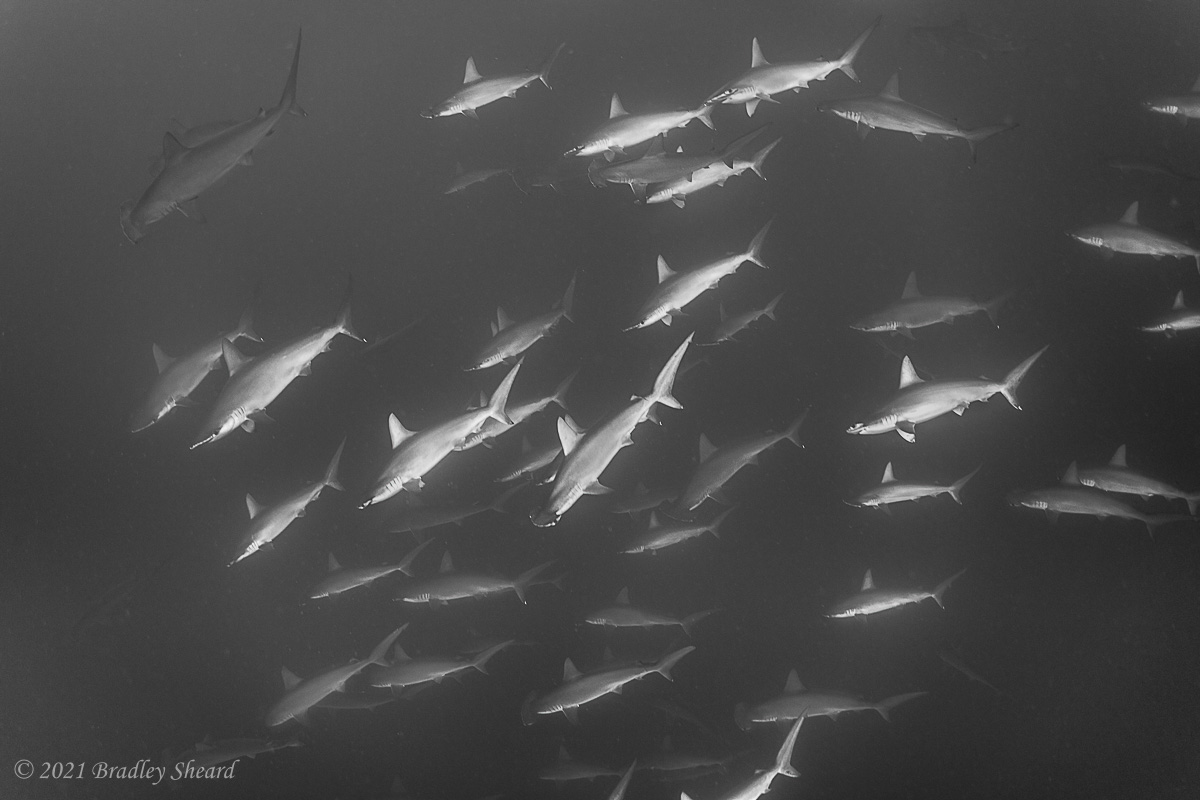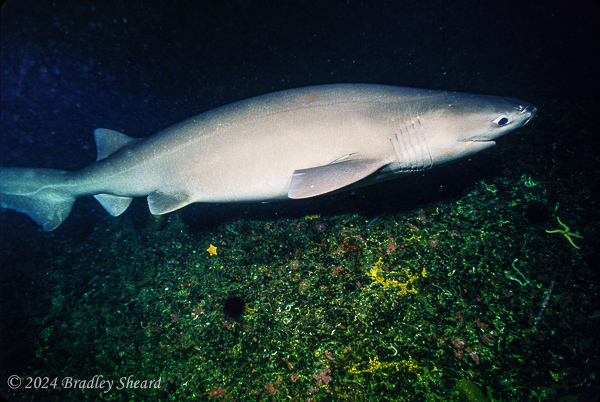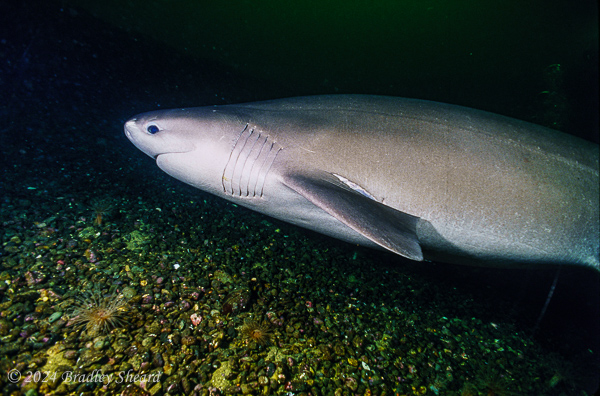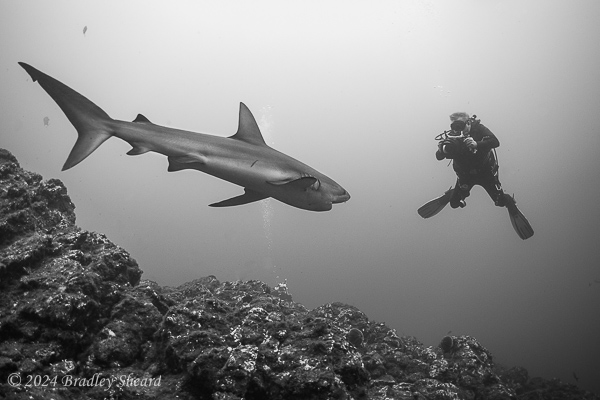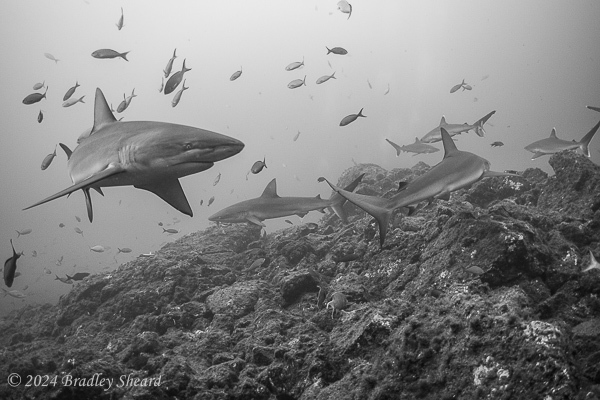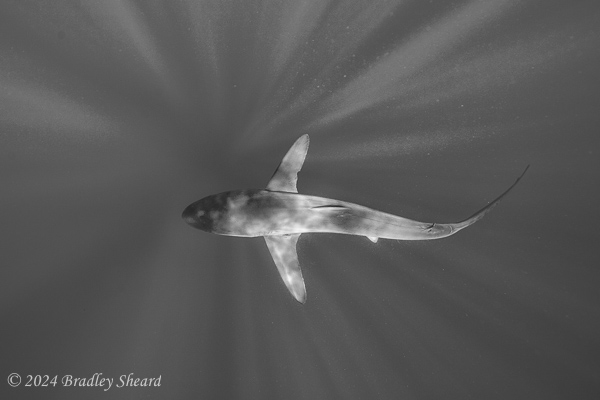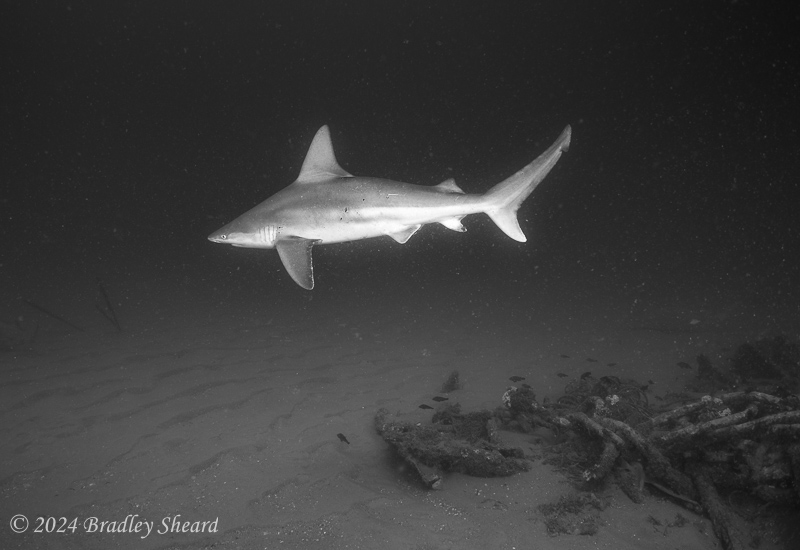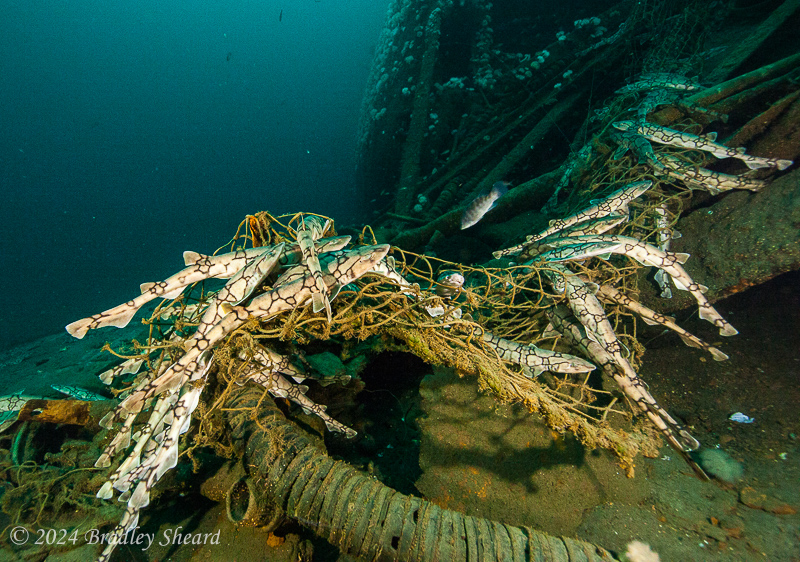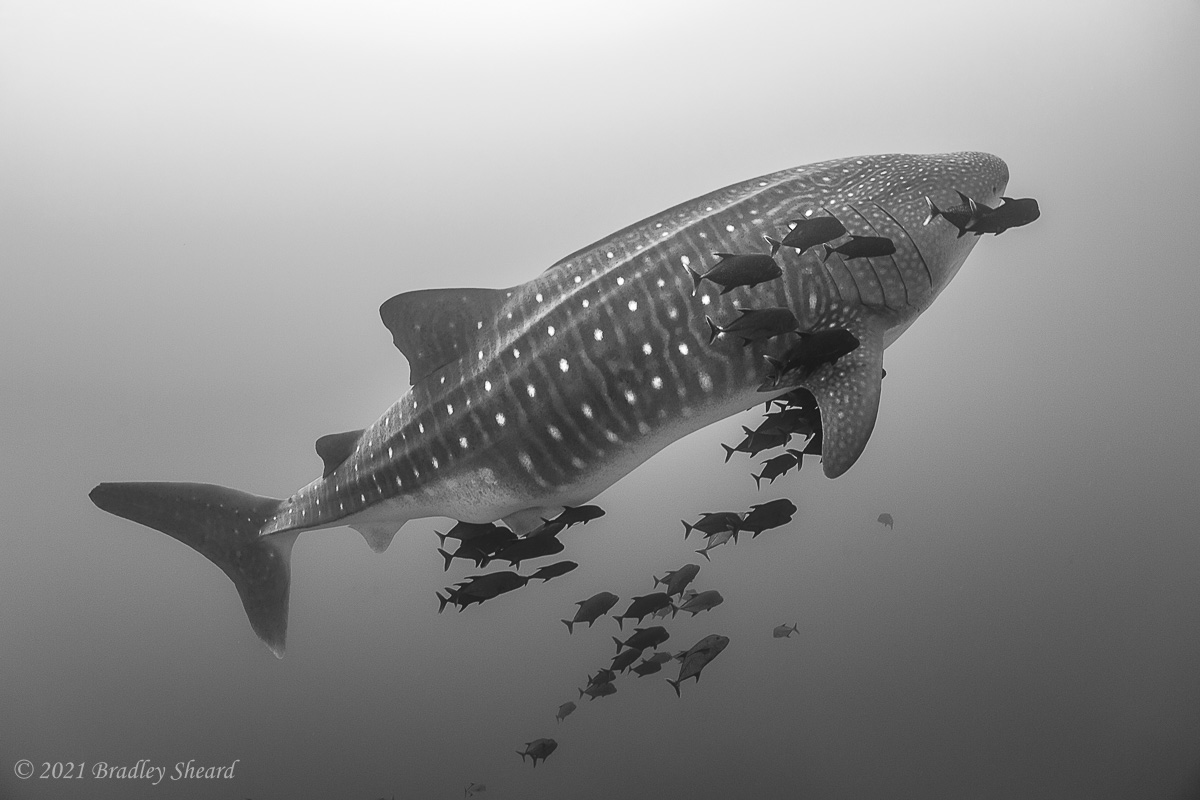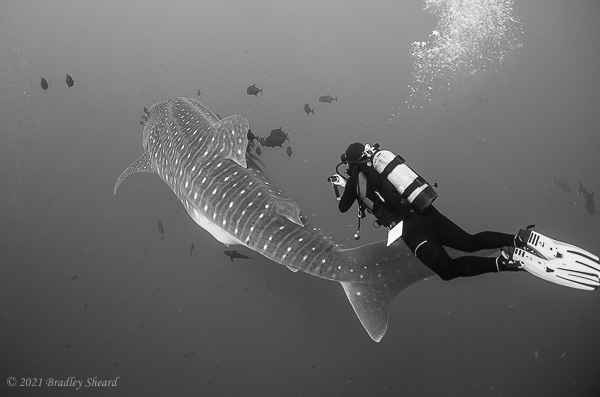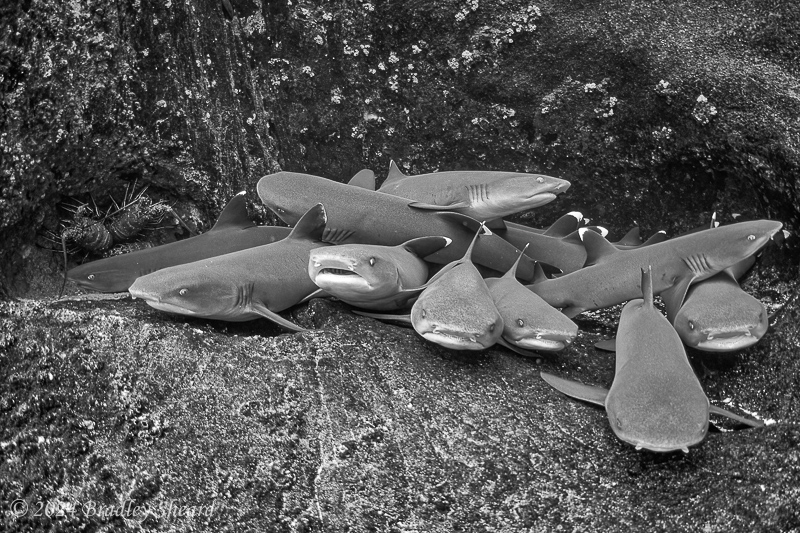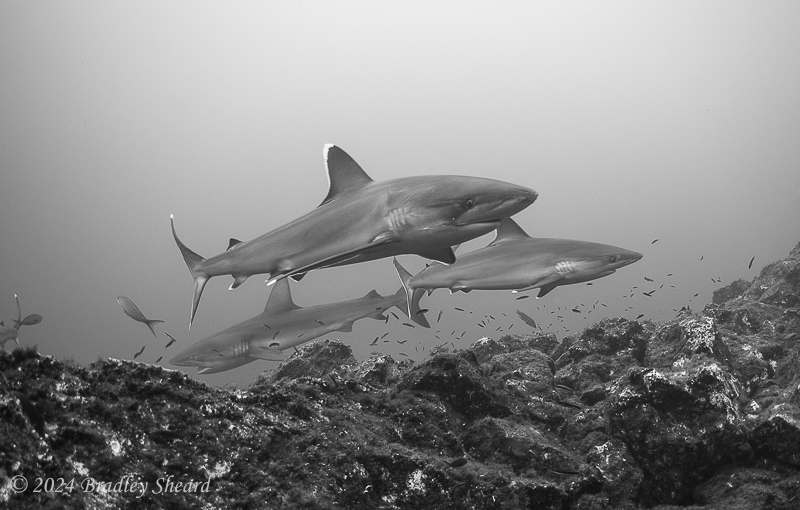SHARKS!
When people you meet find out you are a diver, they invariably seem to ask two questions: 1. How deep do you dive/have you been? 2. Do you see sharks?
The answer to the first question various; the answer to the second is yes, but not nearly as often as you might expect. Personally, for a long time I could count on one hand how many sharks I had seen in the wild, and those encounters were so fleeting that your mind invariably said 'hey wait, I didn't get a good look at you!' But there are places to dive that can virtually guarantee shark sightings; North Carolina shipwrecks are one, and Socorro Island off Mexico is another. There are operations that use shark cages and chum to attract more pelagic species. And then there are random, chance encounters in the open ocean. All in all sharks are magnificent creatures, but like all wild animals they need to be shown the respect they deserve, for both their sake and your own!

